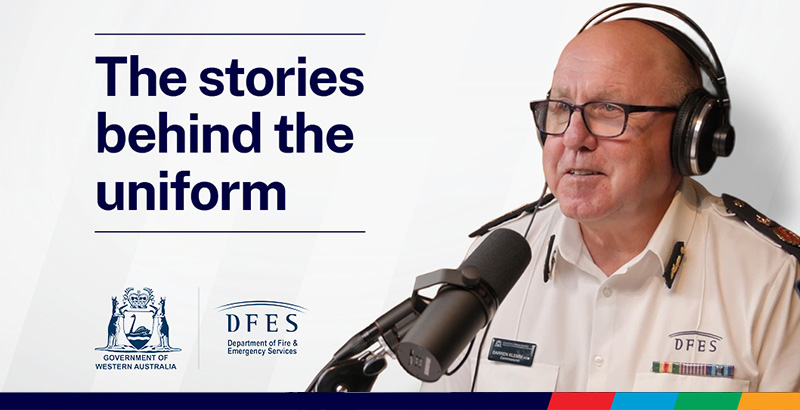Fire or life threatening emergencies: 000
Emergency Information: 13 3337
SES Emergency Assistance: 132 500
The Department of Fire and Emergency Services has launched its first-ever podcast, Mics & Sirens, peeling back the curtains on Western Australia’s fire and emergency services.
In this first season, discover eight episodes which go behind-the-scenes, giving listeners fresh insight and perspective.
From the first call for help to the moment the sirens fade, Mics & Sirens explores the stories, science and strategies behind real incidents – all told by DFES staff and volunteers.
Across the season, you’ll gain a deeper understanding of complex operations like the Kimberley floods, hazardous structure fires and cyclone response. You’ll also hear about the quieter, critical moments – including the coordination, relief and reflection that follow an emergency.
Whether you are part of the emergency management sector or simply curious about the work we do, Mics & Sirens offers rare insights into the challenges, decisions and dedication involved in protecting our communities.
Listen now on Spotify, Apple Podcasts and YouTube, and subscribe to hear all episodes from Season 1 now!
We’re also rolling out Season 2 and this time we go global. Recorded live at the 2025 Australasian Fire and Emergency Services Authority Council (AFAC) Conference and Exhibition in Perth, look out for new episodes featuring expert guests from around the world, providing perspectives on disasters that shook the world and sharing their insights into the latest developments in emergency management.
With so many layers to DFES, it’s impossible to capture all its stories, and the stories of the people behind the uniforms. So, let’s start at the very beginning. That first Triple Zero phone call – where someone in the community has an emergency unfolding before them.
Mark Spatocco, a Communications System Officer at DFES, is one of the calm voices on the other end of the line, often on the worst day of someone’s life. Hear from Mark about how he gets through those tough calls.
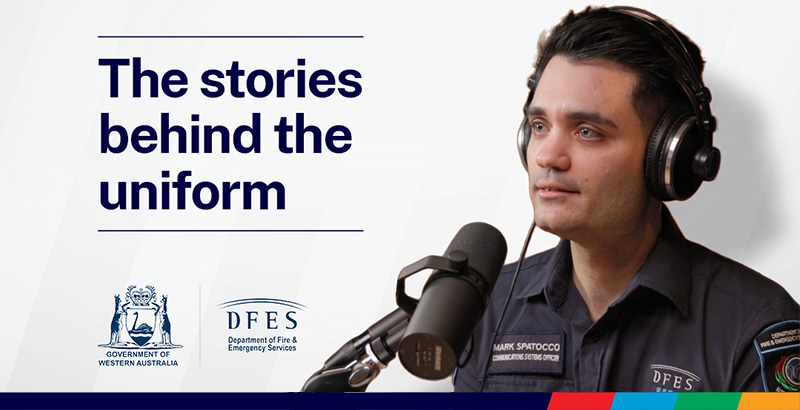
On 28 December 2022, Ex-Tropical Cyclone Ellie crossed over the coast of Western Australia and dumped around 500 millimetres of rain in less than a week. River levels in the Kimberley town of Fitzroy Crossing got to almost 16 metres high. More than 200 homes were damaged - several roads and highways too - and remote communities were left isolated. The destruction was widespread.
As an Incident Controller, Glenn Hall ESM was one of many DFES personnel in charge of coordinating emergency response efforts to help keep people out of harm’s way and deliver emergency services to the community. Hear how Glenn helped lead the response and recovery efforts during this record-breaking flood.
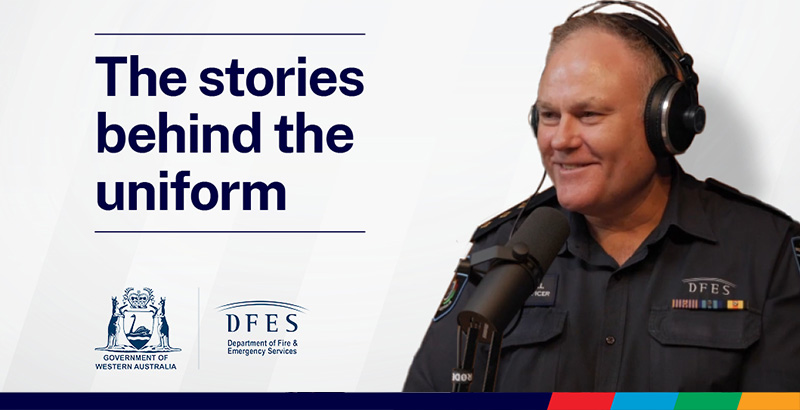
Science isn’t a word we’d expect to hear when talking about fire or emergency services. But major spills and leaks, hazardous material fires, poisonings and explosives are all emergencies that involve chemicals – and we know there is a lot of science behind that.
Jeff Davis’ job is to give advice on how to safely handle potentially dangerous chemicals before, during and after an emergency. That advice could be given in person, over the phone, even when he’s out of State for work. In the world of emergency services – Jeff’s role is critical and could be the difference between a good and bad day.
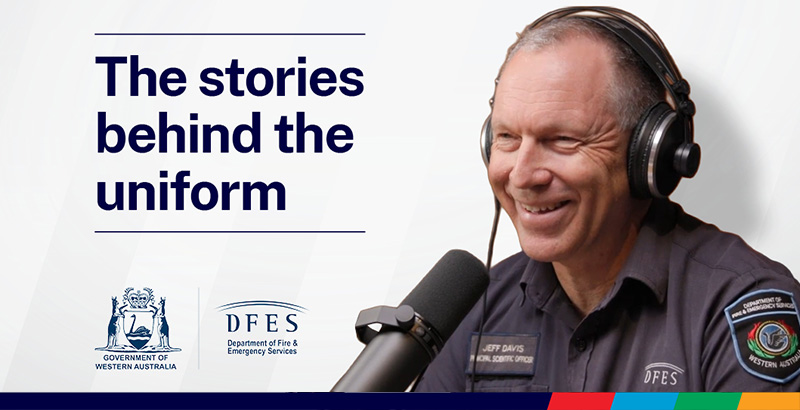
Within DFES there are five groups of emergency services volunteers: Bush Fire Brigade, Volunteer Fire and Rescue Service, Volunteer Fire and Emergency Services, Marine Rescue and the State Emergency Service or the SES.
In her own words, SES volunteer Maxine Burrell, is one of the people in orange you see in the media. The ones on people’s roofs after a storm, in the middle of a deserted track looking for a missing person, or on top of a cliff helping an injured hiker.
Maxine is one of the 26,000 dedicated emergency services volunteers across WA who give up their time – without being paid – to help people before, during and after an emergency.
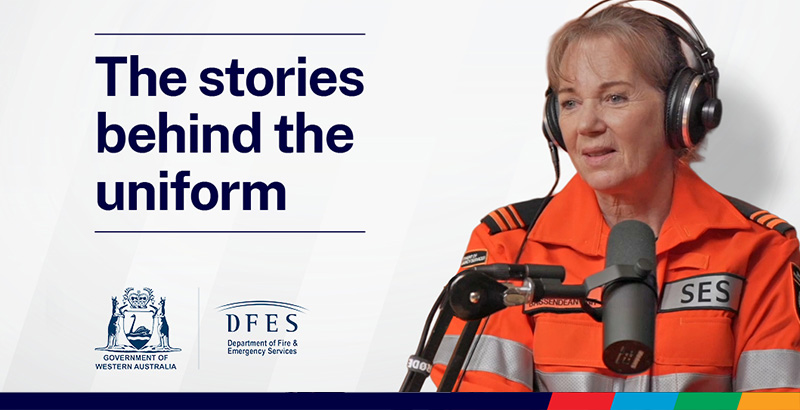
Most of us have seen a house or building destroyed by fire – in real life or in pictures – and know there is usually very little left among the ashes. Fire can erase its own trail, turning the task of figuring out what happened into a complex puzzle with missing pieces.
Understanding how or why a fire started goes beyond appeasing our curiosity. It’s part of the DFES’ role. Our Fire Investigator Mark Hayes takes us beneath the rubble and into the world of fire investigation – where every clue matters and no scorch mark goes unnoticed.
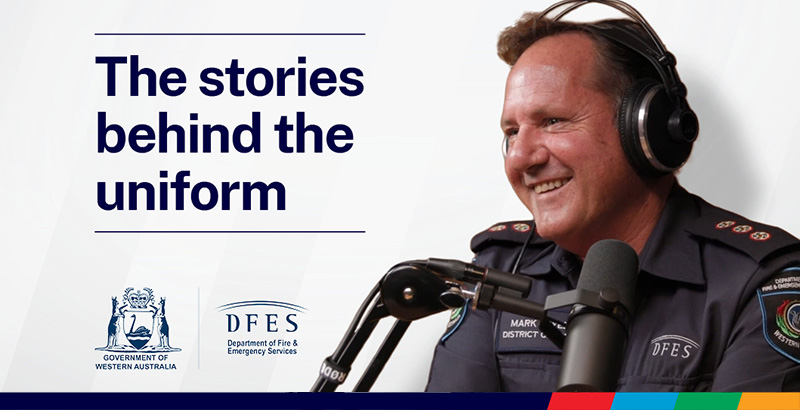
Bushfires, cyclones and floods can change people’s lives forever. But when the flames are out, the sirens fade, and the roads reopen, the impact is far from over. In fact, that’s when the huge task of recovery begins.
Deputy Commissioner Mel Pexton, who happens to be the highest-ranking female at DFES, leads the teams who help communities rebuild after a disaster, which is a process so complex that it can sometimes take years.
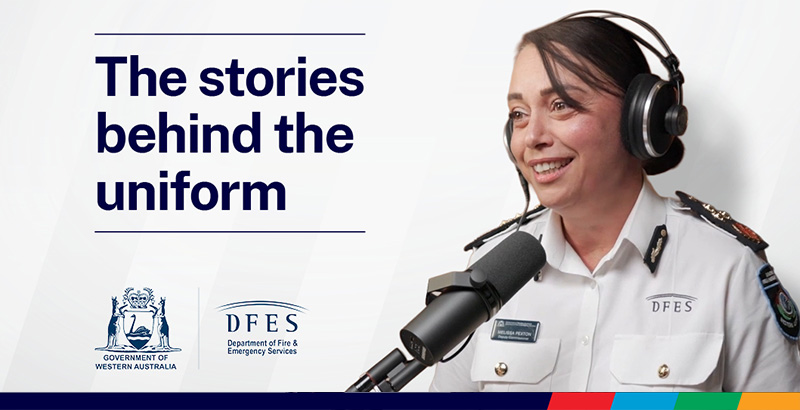
Imagine the year 2075. Firefighting robots navigate burning buildings, guided by intelligence from AI-powered drones in the sky, or a fire truck extends its retractable legs, stepping over a traffic jam to reach a house fire in record time.
These technologies could be 10, 20 or 50 years away, or they may never leave the realm of science fiction. Either way, DFES is looking towards the future.
Assistant Commissioner of Future Capability Jon Broomhall AFSM leads a new division within DFES, dedicated to exploring emerging trends and technologies that could redefine emergency response.
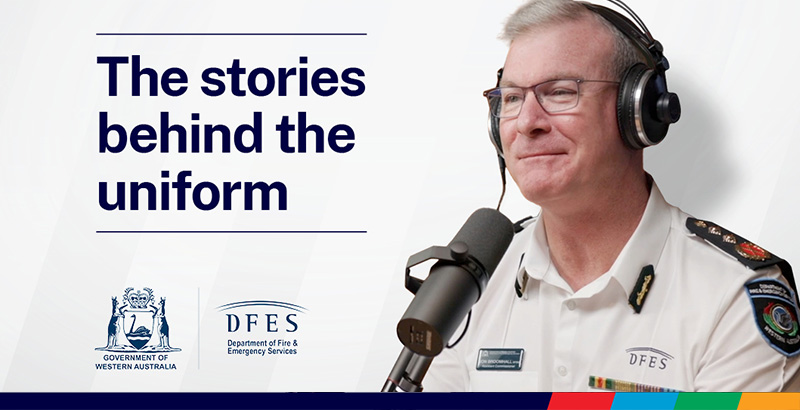
Overseeing fire and emergency services across Australia’s largest State is no small feat. It’s not a nine-to-five, Monday-to-Friday job because emergencies don’t keep business hours.
When critical decisions need to be made, the Fire and Emergency Services Commissioner is always on call. It’s a role Darren Klemm AFSM has held since 2017 and in that time, he has led DFES through major change and growth. In his own words, team is the heart of DFES.
Darren has been a team player for decades. On the frontline as a firefighter and before that on the field as a premiership star in the WA Football League. Hear about the biggest changes he’s witnessed in his career and the surprising role he could see himself in if he weren’t in the top job.
